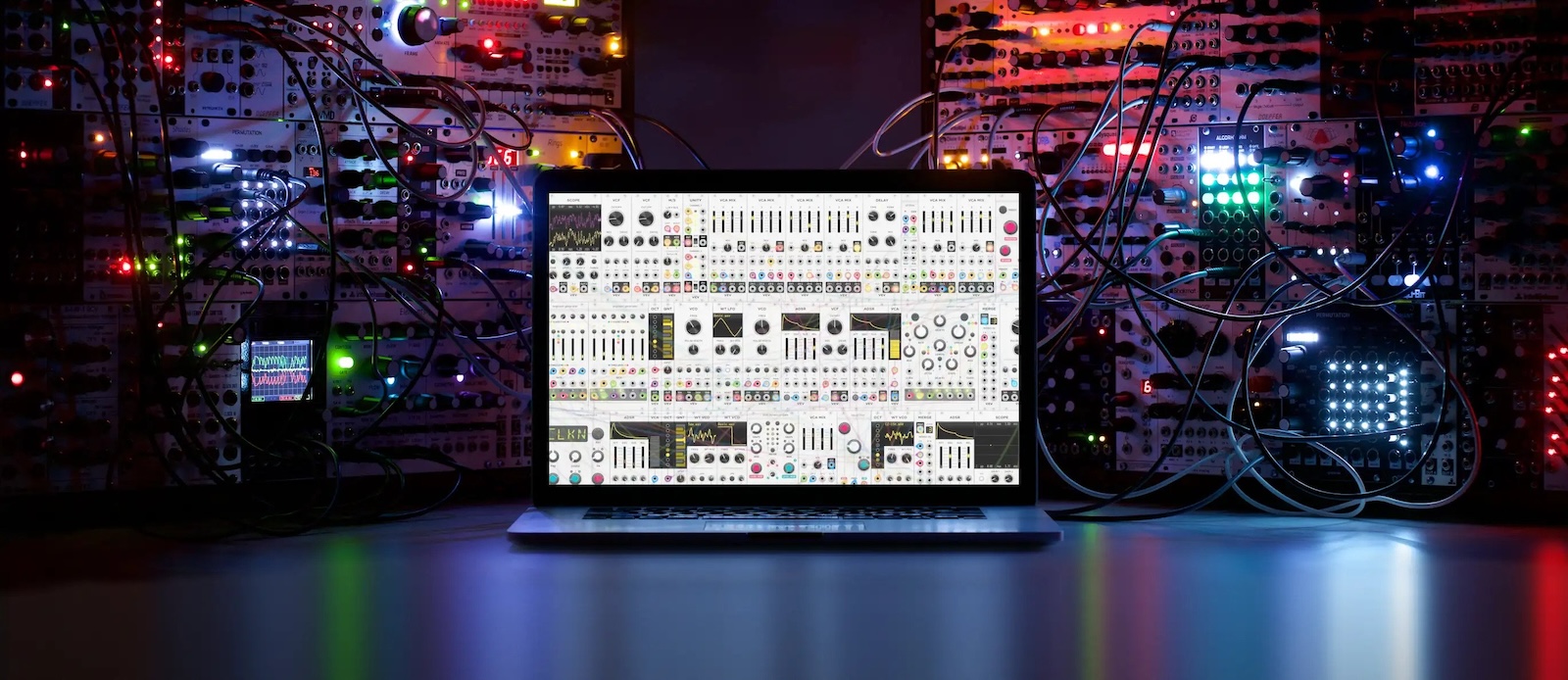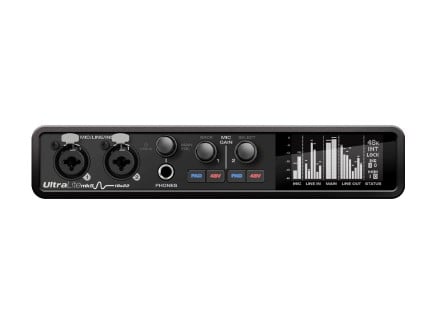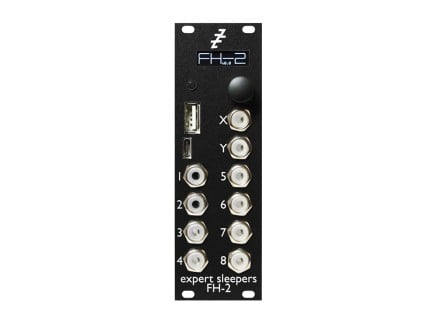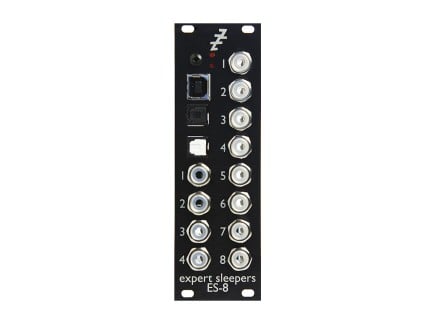Our friend Omri Cohen is back on the Perfect Circuit YouTube channel, this time sharing a patch that makes extensive use of the Expert Sleepers ES-9 interface—bridging the gap between the computer and the world of hardware modular synthesizers.
Omri, of course, is an expert on such matters: he’s made a name for himself as an expert in VCV Rack. Available for free from the VCV website, VCV Rack is a world-class open-source software emulation of Eurorack modular synthesizers. It has an enormous library of modules, created both by VCV and by third-party contributors. Modules range from completely novel devices and standard, classic synthesis tools all the way to accurate re-creations of hardware Eurorack modules…with many modules from Mutable Instruments, ALM Busy Circuits, Instruo, Synthesis Technology, and Doepfer, and others available for use right on your computer.
VCV is easily one of our favorite software platforms for music-making, as it does a great job of translating the Eurorack experience into a virtual format. Moreover, because the basic version of the software is free—and because there are so many great modules available for free—VCV Rack makes an incredible platform for learning about modular synthesis and synthesis in general. It’s accessible, it’s well-supported, and it sounds great to boot. Omri Cohen realized VCV Rack’s potential early on, and has been a strong proponent ever since; and his YouTube channel has become one of the most highly-recommended places to learn about VCV Rack and about modular synthesis altogether.
But…I Was Trying to Get Out of the Box

We get it! Many musicians are attracted to modular synthesis as a means of getting away from the computer: many who are used to working “in the box” want to get their hands on real hardware, and see the modular synthesizer as a way of building their own, personal, highly-specialized physical musical instrument. And rightly so! Modular synthesizers—and especially Eurorack systems—are highly configurable devices that can become basically whatever you want them to be. And, of course, being able to physically interact with an instrument is a large part of what makes music-making so gratifying to many artists. So, working with VCV Rack alone isn’t always a permanent solution; and for some, it’s simply part of their larger creative practice.
There are, of course, many ways to “bridge the gap” between the world of VCV Rack and hardware synthesizers. For those who are used to working in the box, perhaps the most obvious is MIDI control; indeed, you can easily connect MIDI controllers to VCV Rack, whether to send in note data or to map CC control sources to Rack’s various knobs and sliders. But, in the video above, Omri walks us through an even more interesting method of connectivity: the Expert Sleepers ES-9 interface module.
You can think of the ES-9 as being similar to a typical audio interface. It has a number of inputs and outputs, connects to a computer via USB, and offers dedicated headphone and 1/4” stereo monitor outputs. The key difference between ES-9 and a typical audio interface, though, is that it is a Eurorack module—and most of its I/O are optimized for use with Eurorack level signals. That means that all of ES-9’s fourteen inputs are ready to accept Eurorack-level signals; and its eight 3.5mm outputs are capable of sending Eurorack-level signals from a computer. What’s more, all of these inputs and outputs are DC-coupled, meaning that they can send or receive low-frequency signals…such as LFOs, sequences, or other modulation signals that are commonplace in modular systems. Meanwhile, the two monitor outputs and headphone outputs operate at levels appropriate for those types of connections…so, ES-9 could easily be the central hub of a Eurorack-focused recording setup or performance rig.
In Omri’s video above, he demonstrates a patch that exploits some of the most interesting possibilities that the ES-9 offers. In conjunction with a software like VCV Rack, it presents the opportunity to create a completely seamless connection between the computer and a hardware modular synthesizer. So, in so many words, what are some of these possibilities?
- It’s possible to send clock signals bidirectionally. You could use VCV rack to clock your hardware system—or you could use your hardware system to clock VCV Rack.
- By the same logic, it’s possible to send modulation signal bidirectionally.
- You can send audio from your hardware system into VCV rack, where it can be processed through filters or effects, or mixed together and used alongside virtual synth sounds originating from VCV rack itself.
- You can send audio from VCV Rack to your modular…meaning that you could do sound generation or sample manipulation in VCV, and further process it through your hardware modules—or add extra voices to your hardware system by generating them in the computer.
Each of those bullet points above is an entire universe of possibilities, and you’re free to explore them in any combination that you can imagine. You can think of the ES-9 and Rack’s Audio 8 or Audio 16 modules as a portal between the virtual and material worlds…and what goes through it is completely up to you.
This offers an astonishing level of freedom in building a hybrid computer/modular-based setup. This can be advantageous to advanced users looking to built intricate control systems for their hardware, or who are looking to use elaborate hardware patching strategies in order to control software. But perhaps one of the most profound takeaways here should be that, as you’re growing your hardware modular setup, using something like an ES-9 and VCV rack can be a way of filling gaps in your system, or of exploring new directions to take your hardware setup. It gives you the ability to try out ideas you might not be able to with your current hardware setup alone—and it allows you to freely expand your system at will. This can be a huge deal, making it possible to get so much more out of even the most modest of hardware setups.
Omri’s video above—and in fact, his whole YouTube channel—is dedicated to exploring how truly incredible VCV Rack is, and how gratifying it can be to combine the worlds of hardware and software. If that’s something that interests you, we’d strongly recommend taking a look at VCV Rack, as well as the ES-9.
Of course, the ES-9 isn’t the only tool out there capable of building this sort of bridge—and VCV Rack isn’t the only software capable of creating this sort of symbiotic relationship with a modular synthesizer. If you want to dive deeper into this weird world, we’d strongly recommend checking out our article Connecting Your Computer + Modular Synths, in which we dive into DC-coupled audio interfaces, MIDI to CV, and strategies for bringing your computer and modular closer than ever before.











